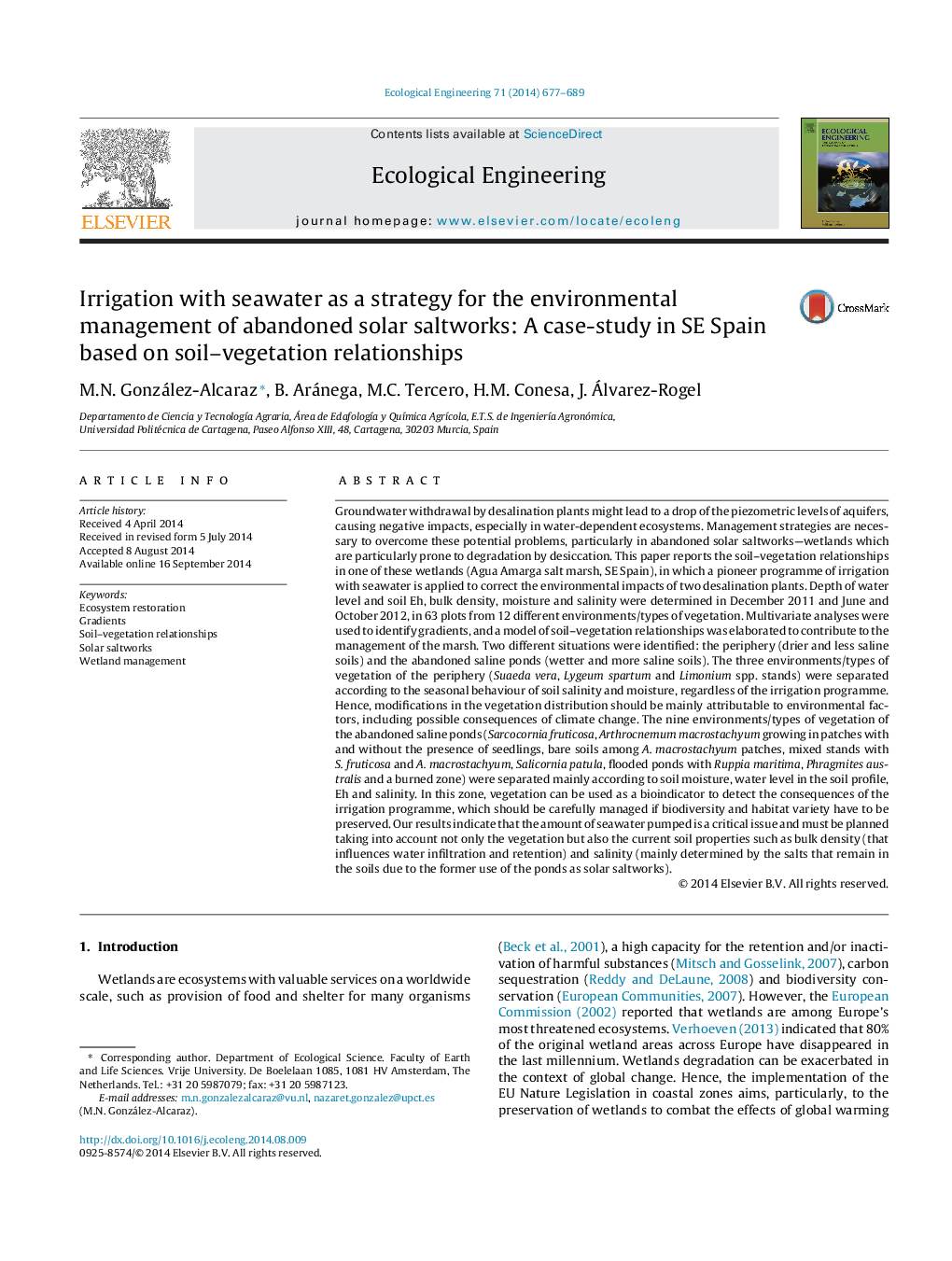| کد مقاله | کد نشریه | سال انتشار | مقاله انگلیسی | نسخه تمام متن |
|---|---|---|---|---|
| 4389211 | 1618028 | 2014 | 13 صفحه PDF | دانلود رایگان |

• The old salt work use influenced salinity more than the current seawater irrigation.
• Seawater irrigation affected water regime in saline ponds but not in periphery areas.
• In the periphery plants can be indicators of impacts such as climate change.
• In the old saline ponds plants can be indicators of the seawater irrigation programme.
• Planning of amount of water pumped must consider plants, but also soil conditions.
Groundwater withdrawal by desalination plants might lead to a drop of the piezometric levels of aquifers, causing negative impacts, especially in water-dependent ecosystems. Management strategies are necessary to overcome these potential problems, particularly in abandoned solar saltworks—wetlands which are particularly prone to degradation by desiccation. This paper reports the soil–vegetation relationships in one of these wetlands (Agua Amarga salt marsh, SE Spain), in which a pioneer programme of irrigation with seawater is applied to correct the environmental impacts of two desalination plants. Depth of water level and soil Eh, bulk density, moisture and salinity were determined in December 2011 and June and October 2012, in 63 plots from 12 different environments/types of vegetation. Multivariate analyses were used to identify gradients, and a model of soil–vegetation relationships was elaborated to contribute to the management of the marsh. Two different situations were identified: the periphery (drier and less saline soils) and the abandoned saline ponds (wetter and more saline soils). The three environments/types of vegetation of the periphery (Suaeda vera, Lygeum spartum and Limonium spp. stands) were separated according to the seasonal behaviour of soil salinity and moisture, regardless of the irrigation programme. Hence, modifications in the vegetation distribution should be mainly attributable to environmental factors, including possible consequences of climate change. The nine environments/types of vegetation of the abandoned saline ponds (Sarcocornia fruticosa, Arthrocnemum macrostachyum growing in patches with and without the presence of seedlings, bare soils among A. macrostachyum patches, mixed stands with S. fruticosa and A. macrostachyum, Salicornia patula, flooded ponds with Ruppia maritima, Phragmites australis and a burned zone) were separated mainly according to soil moisture, water level in the soil profile, Eh and salinity. In this zone, vegetation can be used as a bioindicator to detect the consequences of the irrigation programme, which should be carefully managed if biodiversity and habitat variety have to be preserved. Our results indicate that the amount of seawater pumped is a critical issue and must be planned taking into account not only the vegetation but also the current soil properties such as bulk density (that influences water infiltration and retention) and salinity (mainly determined by the salts that remain in the soils due to the former use of the ponds as solar saltworks).
Journal: Ecological Engineering - Volume 71, October 2014, Pages 677–689